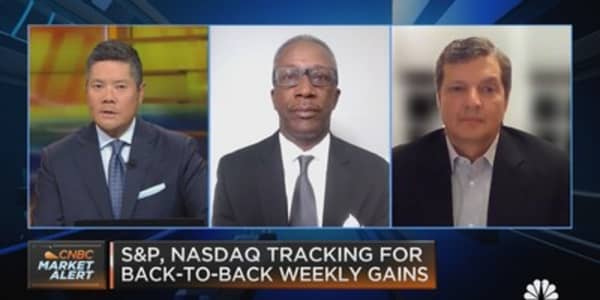When the Covid-19 pandemic hit the U.S. in mid-March, there were three types of financial advisory firms: high-tech, low-tech late adopters and firms somewhere in between.
The overnight shift to work-from-home was vastly different for each type. Low-tech firms transported printers and fax machines to their homes and scrambled to provide employees with the tools necessary to login remotely.
Meanwhile, the in-between firms figured out how to forward phone lines to their cell phones and set up Zoom accounts. Employees at high-tech firms simply stopped commuting and fired up their laptops at home. In hindsight, this miraculous, overnight transition from in-office work to Zoom meetings was inspiring.
The New York Stock Exchange closed its doors, and financial markets did not miss a beat. I shudder to imagine the havoc a global pandemic could have caused all of us 20 years ago. We are fortunate today to have the tools and technology that kept us operational.
So, now the question is: In a prolonged remote work environment, how will traditional advisory firms get new clients and stay connected to existing clients?
More from FA Playbook:
Advisors need to listen more to keep clients on board
Here are tips financial advisors offer to new parents
Workplace benefits may reflect new reality of Covid-19
Firms built on face-to-face meetings held in immaculate conference rooms high atop the downtown skyline need new business development strategies. Can these old dogs learn new tricks? Building trust with potential clients and maintaining connections with current clients in a remote environment is no easy task.
Selling financial advice is different than selling a hot new product or service. Advisors need a great deal of credibility to convince investors to trust them with all of their money, or even a part of it.
The average age of financial advisors in the U.S. is somewhere between 51 years and 55 years. These pioneers built the fledgling advice business, an industry that emerged as Americans retired earlier, lived longer and saved for retirement on their own as pension plans faded away.
Traditional advisors connected with clients in their local communities, people who belonged to the same churches, clubs and PTA groups. Clients met with traditional advisors face-to-face, either in the office or in their homes.
Advisors carried copies of beautifully bound, paper presentations. This tangible experience cemented trusted relationships. In turn, satisfied clients referred friends, colleagues and acquaintances to their advisor.
The pandemic has basically pushed forward 10 years of technological progress in areas ripe for innovation. Convenience is now the norm in the modern consumer experience. Advisory firms are not immune to this shift in client expectations.
A common complaint about the advice industry is the slow adoption of technology. Paperless account opening options have been available for years, yet many advisors still rely on physical paper and ink signatures.
Client portals and cell phone applications used by advisors are notoriously cumbersome with clunky user experience. Letting go of our traditional roots means pushing forward into a brave new digital world.
Overall, financial advisors are also late adopters of social media.
Hiding behind the veil of compliance, many advisors were reluctant to dip their toes in the water. In the wake of Covid-19, some are now jumping in feet first.
I have noticed a significant increase of blogs, LinkedIn posts, tweets and use of Instagram accounts among my personal network of advisors. From the wirehouse broker making multiple TV appearances to the registered investment advisory firm producing video and webinar presentations, advisors are marketing their services online more than ever before.
However, increased activity and business growth are not always correlated.
Digital marketing strategies require a certain "je ne sais quoi," that magical sauce that builds relationships with potential clients.
I suspect many traditional firms will work hard to produce digital content that fails to connect with target audiences or generate new business. These firms risk being left behind in the post-pandemic world.
Social media is first and foremost social. Brand accounts do not garner as much attention, engagement or trust as individual accounts do. Firms that fail to recognize the power of the individual brand, or those whose cultures oppose the promotion of personal brands, will lose momentum on social media. They may fail to gain any traction at all.
Of course, handshakes and in-person meetings will return in a post-Covid-19 world, but the convenience of conducting business from the comfort of home is a permanent shift in consumer expectations. That means advisors must adapt and find new ways to engage with potential clients. But there are no shortcuts for building trust in a virtual world.
Advisors must dedicate time and resources to making this shift in strategy.
The digital marketing paradigm shift will determine which advisors succeed over the coming decades and which will wither on the vine.
— By Blair DuQuesnay, investment advisor and financial planner at Ritholtz Wealth Management




